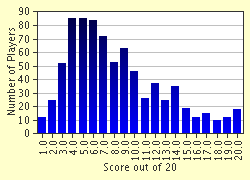Quiz Answer Key and Fun Facts
1. Upon the dissolution of the Livonian Order in 1561, this country was transformed into a duchy under Polish suzerainty. After 1737 its duke was a client ruler of the Russian throne. The country came under Russian rule in 1795. Major cities were Libau (Liepaja), Windau (Ventspils) and Mitau (Jelgava).
2. This country included cities as Dorpat (Tartu), Pernau (Pärnu), Wenden (Cesis) and Dünaburg (Daugavpils). The country was divided by Poland, Sweden and Russia in a war from 1558 to 1582.
3. This country became an independent kingdom in the 10th century under Sancho III (1000-1035). It was annexed to Aragon in 1076 and incorporated into Castile in 1515. The northern part was united with France in 1589.
4. This country became an independent kingdom in 1035. The ruler obtained the kingdom of the Two Sicilies (1282-85) which he later surrendered for Sardinia and Corsica. It was united with Castile in 1479.
5. This kingdom used to be called the Kingdom of Arles. It changed name in 1032 after the absorption of Arles by the Holy Roman Empire.
6. This country was ruled by counts as a part of the Kingdom of Arles under the suzerainty of the Holy Roman Empire. It became virtually independent and expanded its territory to include Piedmont. It became a duchy in 1416. By the Treaty of Utrecht in 1713 it received Sicily and held it until 1720 when it was exchanged for Sardinia.
7. This country was made a grand principality within the Austrian empire in 1765. It was made integral part of Hungary in 1867 and was annexed by Romania in 1918-20.
8. This country or region was part of the Holy Roman Empire. During the middle ages parts of the region was variously absorbed by, among others, Brandenburg, Bohemia and Saxony. Its inhabitants were originally a Slavic tribe, the Sorbs, a group of the Wends. The Sorbs still exist as an ethnic group in the region.
9. The western part of this country or region became a German speaking duchy in the 12th century. The Eastern part came under the Teutonic knights and was returned to Poland in 1466 as a part of West Prussia. The duchy came to Brandenburg, which divided it with Sweden in 1648.
10. This country became a duchy in 1348. It was divided into two grand duchies in 1701: _____-Schwerin and ______-Strelitz.
11. This duchy passed to Bohemia in the 14th century and passed to the Austrian Habsburgs in 1526. All of it (excluding the extreme south/south-east) was ceded to Prussia in 1742. It was divided into a German, an Austrian and a Polish section.
12. This country was at the height of its power under Ottokar II (1253-78). It reached its so called "golden age" in the 14th century controlling Upper and Lower Lusatia, Moravia, Silesia, Slovakia and Krakow.
13. This country became an independent kingdom in 870. It was conquered by Hungary in 906. It became a separate crown land of Austria in 1849 with capital at Brno.
14. This country was established ca. 1300 as a vassal of Hungary with capital at Târgoviste (Tîrgoviste). It made became a tributary state of the Turks in the 15th century although resistance to the Turks was provided, notably by Vlad Dracul (1436-47) and Vlad Tepes (1456-62, 1476-77).
15. This country became independent from Poland in 1660, and in 1701 became a kingdom that included all holdings of Brandenburg, except those in the Rhineland.
16. This country or region was seized from the Tatars by Lithuania in 1360. Its western part was included in Poland in 1431. A small area in the west came to Austria in 1772 and the remainder went to Russia in 1793.
17. This country (under Maximilian I) was the leader of the Catholic League in the 30 Years War 1618-48. It merged its customs union with that of Prussia in 1833.
18. This country was formed in 1918 and divided Jan 1, 1993.
19. This country was established in 1918, but didn't get this name until 1929.
20. This country was established as a state in 1949 and declared a sovereign state in 1955. It existed until Oct 3, 1990.
Source: Author
author
This quiz was reviewed by FunTrivia editor
bloomsby before going online.
Any errors found in FunTrivia content are routinely corrected through our feedback system.

